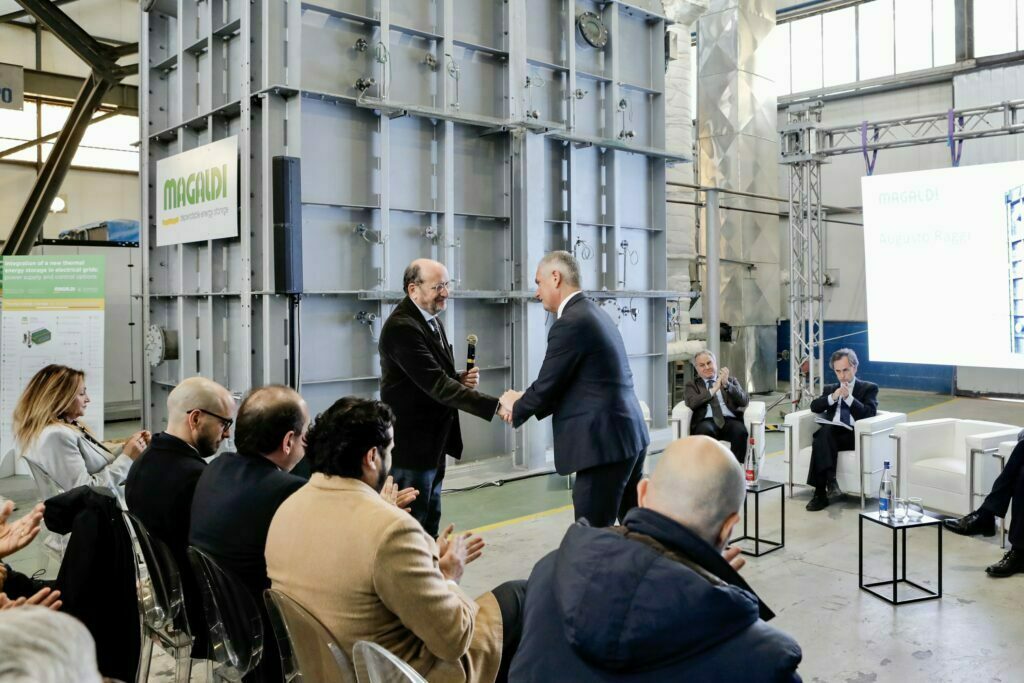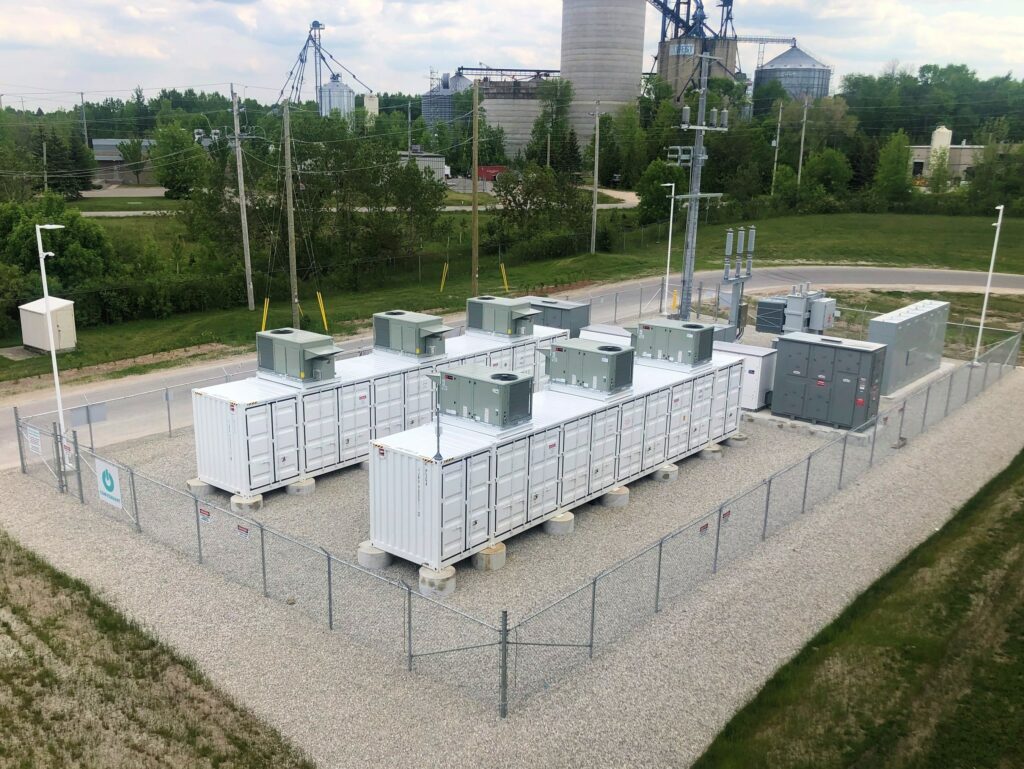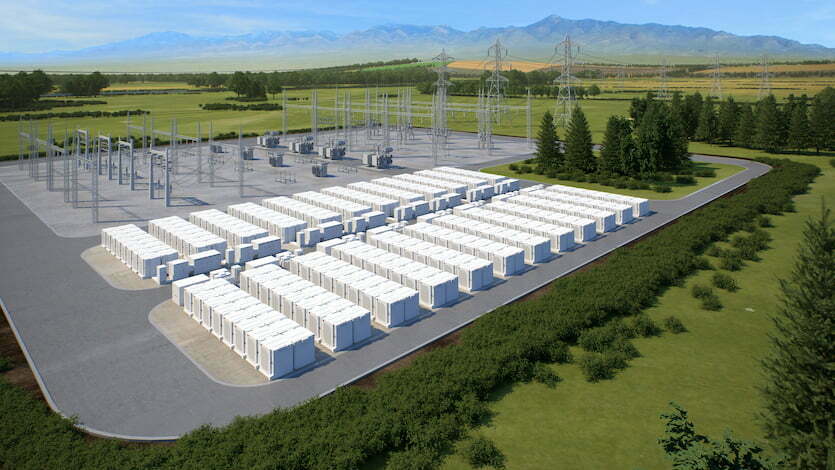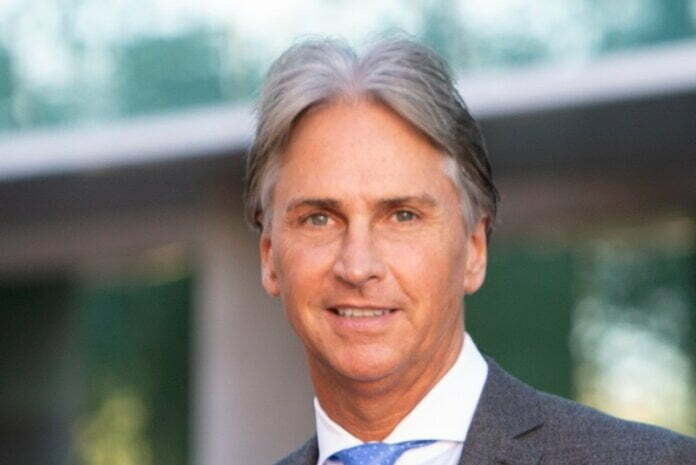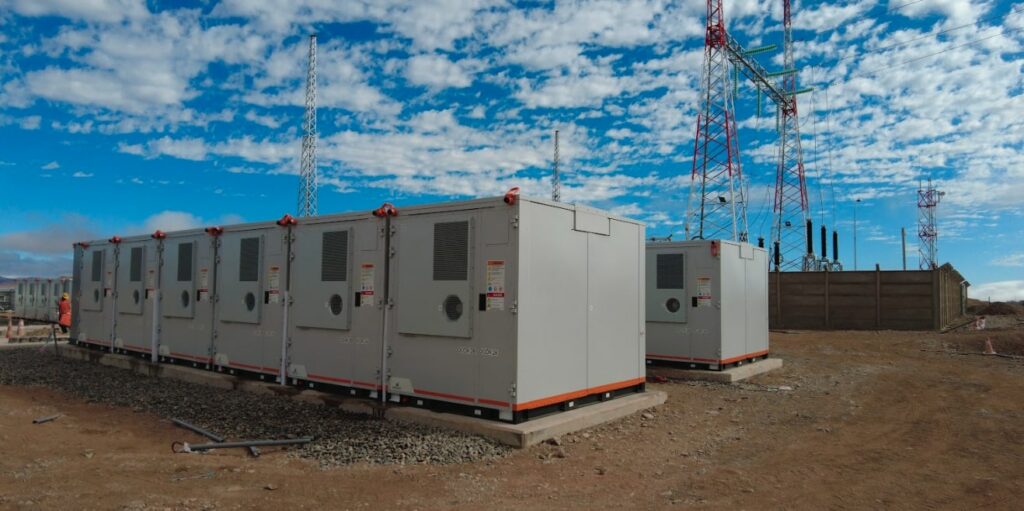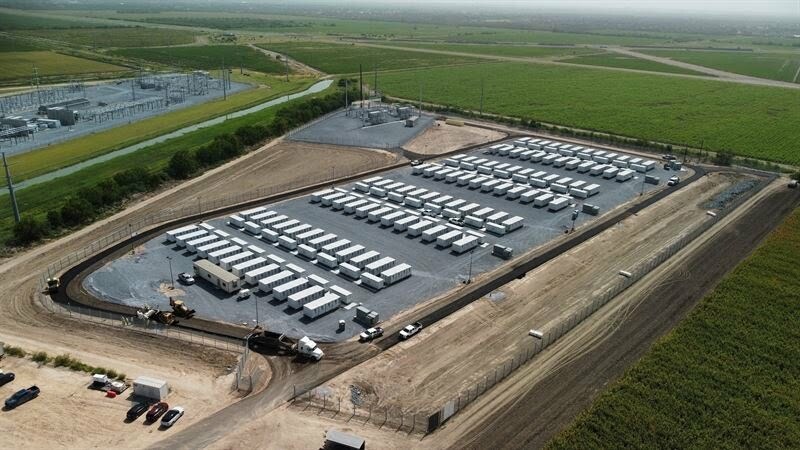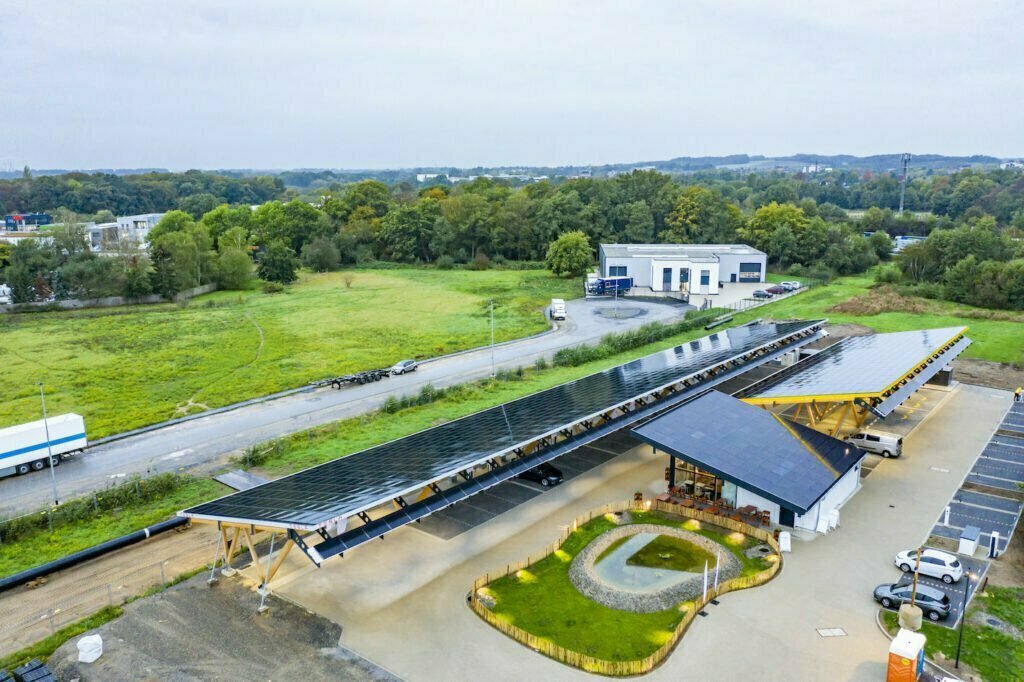Presentation of Magaldi MGTES unit at the event in Salerno, Italy. Image: Enel X / Magaldi Group
Partners Enel X and Magaldi Group have begun construction in Salerno, Italy, on a 13MWh thermal energy storage (TES) plant based on a patented technology.
Called Magaldi Green Thermal Energy Storage (MGTES), the storage tech was developed by ultra-high temperature material handling company Magaldi and utilises a fluidised sand bed to store heat, which is then released as steam at temperatures between 120-400°C.
Aimed at helping to decarbonise industrial processes that require heat, the technology was described as the “first worldwide patented sand-based battery” to store energy as high-temperature steam.
The first 125-tonne installation will be powered by a 5MW solar PV array and is being deployed for IGI, a food company based in the Salerno province of Buccino.
Enel X, the digital, smart energy and energy efficiency arm of Enel Group, has signed a memorandum of understanding (MoU) with Magaldi Group’s Magaldi Power subsidiary to find suitable sites and begin deploying MGTES systems in Italy.
MGTES can “ensure high levels of efficiency” in industrial processes that require high temperatures, Enel X CEO Francesco Venturini said, noting that the Italy-developed technology is backed by an Italian supply chain, while claiming opportunities for it will be found outside Italy too.
It can be a drop-in replacement for burning gas for various industrial applications, according to Magaldi Group president Mario Magaldi.
“Italy has the resources and know-how required to play a prominent role in the battery industry for energy storage, which is instrumental in producing renewable energy on a continuous basis, and in this way will help make the whole system stable and safe,” Magaldi said.
The 13MWh system is scheduled to come online in the second half of 2024, covering about 20% of IGI’s energy consumption and making renewable energy available to it around the clock.
Sand-based energy storage was in the news recently with the inauguration of an 8MWh project in Finland that stores heated sand in a cylindrical tower to be used for district heating, through tech startup Polar Night Energy.
Brenmiller to have thermal storage ‘gigafactory’ this year
Elsewhere, and further down the road to commercialisation, Israel-headquartered Brenmiller Energy said it will reach 4,000MWh annual production capacity of its TES modules by the end of this year.
The thermal storage specialist is listed on the Tel Aviv Stock Exchange and NASDAQ. Its technology uses electricity and waste heat to heat crushed rocks to high temperatures, storing it for later use including long-duration energy storage (LDES) and multi-day applications. Like MGTES, the stored heat is outputted as steam, which can be used as heat, or drive turbines to generate electricity.
Brenmiller in fact inaugurated a 24MWh project in Italy last November with Enel X parent company Enel Group, at a power station in Tuscany.
Called bGen, the Brenmiller modules are going to be made at a factory site in Dimona, Israel. The factory is set to begin production in May and Brenmiller said key equipment has recently arrived, financed through a non-dilutive credit facility worth €7.5 million (US$8.17 million) with the European Investment Bank (EIB).
The TES technology is like Magaldi Group’s sand battery aimed at industrial processes, but also power generation applications, with Brenmiller touting that it can be fully powered by forms of energy including waste heat and biomass.
“We believe Brenmiller is on track for another TES industry first—that, by the end of 2023, it will become one of the first global TES companies with an operational TES production facility that will enable it to service the growing market demand.
“The impending completion of our production facility is well timed, as we expect to increase commercial orders based on our current project pipeline and the completion of pilot projects now underway,” Brenmiller Energy president and CEO Avi Brenmiller said.
Nearly half of all global greenhouse gas (GHG) emissions come from heat processes, making the need to decarbonise both an urgent challenge and a major opportunity that energy storage technologies can help tackle. A report last year from the Long-Duration Energy Storage Council (LDES Council) analysed and outlined the size of the addressable market for thermal storage, measured in terawatts of energy and billions of dollars.
Continue reading

